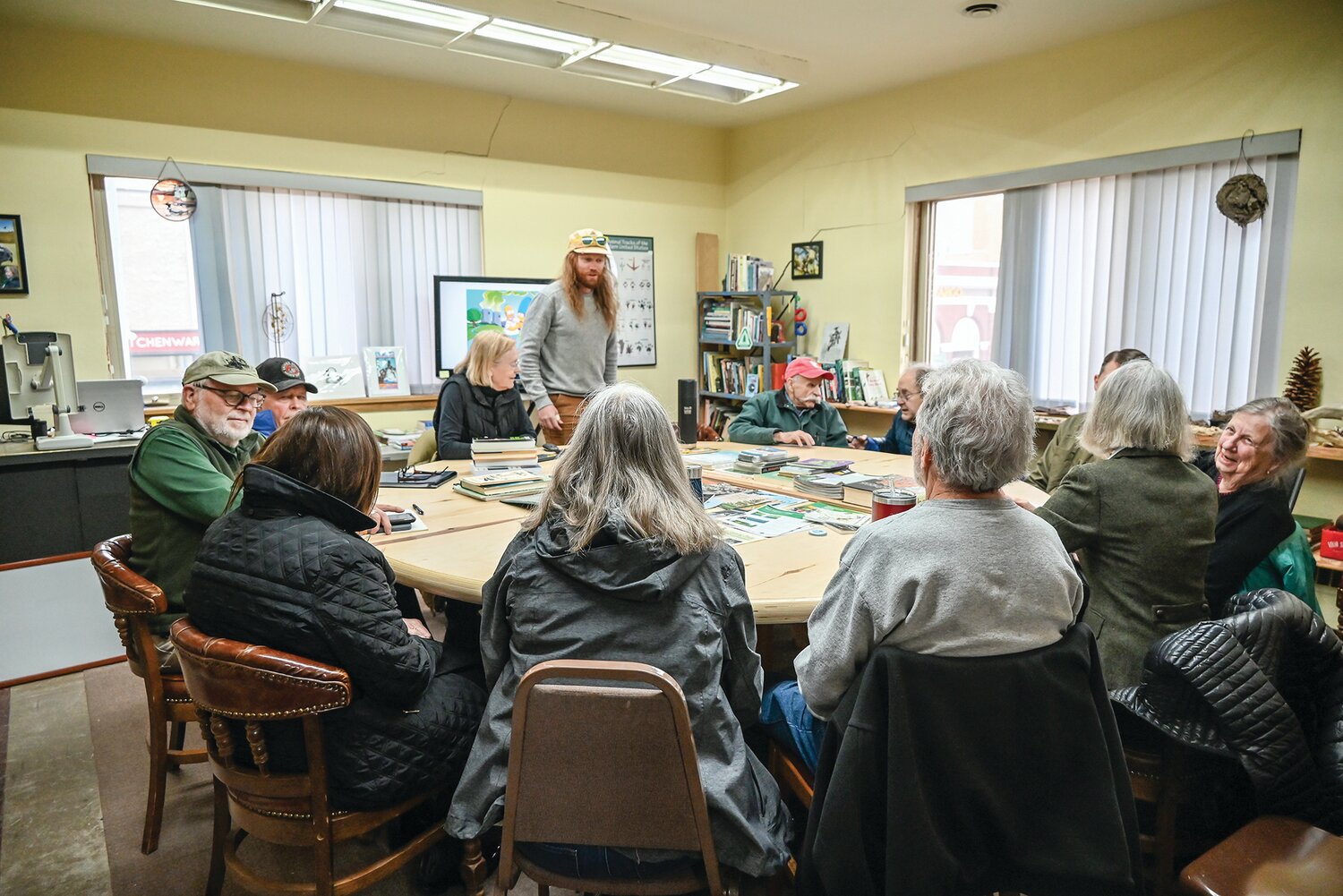Support the Timberjay by making a donation.
Climate Group discusses Minnesota’s nuclear moratorium
ELY- Should Minnesota repeal its moratorium on building new nuclear power plants? That was the topic taken up by retired physicist and professor Barbara Jones, who offered a deeply-researched slide …
This item is available in full to subscribers.
Attention subscribers
To continue reading, you will need to either log in to your subscriber account, below, or purchase a new subscription.
Please log in to continue |
Climate Group discusses Minnesota’s nuclear moratorium
ELY- Should Minnesota repeal its moratorium on building new nuclear power plants? That was the topic taken up by retired physicist and professor Barbara Jones, who offered a deeply-researched slide presentation at the April meeting of the Ely Climate Group.
“Why are we here today talking about nuclear power?” Jones asked as she kicked off her presentation. She noted that Minnesota will need twice as much power in 2040 as it uses today, and that will present an enormous challenge at a time when traditional forms of energy must be phased out.
“Minnesota has a mandate to be 100 percent carbon-free by 2040,” she said, and that means carbon-based power sources like coal and gas have no long-term future in the state.
If Minnesota’s two nuclear power plants stay in operation through that date, she noted, Minnesota will still need to expand its wind and solar power capacity from 31 percent to 88 percent of the state’s total demand— which means the state will rely heavily on sources of energy that aren’t always reliable.
Clean, reliable, and cheap
“Everyone wants electricity to be reliable, clean, and cheap,” Jones said, “but coal and gas are not carbon-free, wind and solar are not reliable. Nuclear is reliable and clean, but it’s not cheap.”
Even with advances in large battery storage technology, wind and solar provide unsteady power to the electric grid, said Jones. That leaves nuclear as a steady, if costly, power source capable of reliably meeting Minnesota’s projected electricity needs, she said.
Advances in nuclear power
Jones reviewed advances in nuclear plant design, highlighting the trend toward safe, advanced reactor models and small, more affordable, modular reactors. She also included a review of American nuclear trends with comparisons to the rest of the world.
Jones described the current small modular reactor (SMR) projects underway in the U.S. like the Oklo SMR in Idaho and Ohio, and the TerraPower Natrium SMR in Kemmerer, Wyo. Jones touched on the denial in 2022 of Oklo’s application to build a prototype SMR design at the Idaho National Laboratory.
Oklo is a newcomer to the nuclear engineering industry. The Nuclear Regulatory Commission turned down its application for failure to provide sufficient safety and design details. “These are some of the problems these start-ups with new reactor designs face,” Jones noted.
Barriers to new nuclear
Jones reviewed the hurdles to new nuclear power in Minnesota, which include concerns over safety, the lack of a dedicated disposal site in the U.S., and legislative barriers like the current Minnesota moratorium on new nuclear plants.
Jones touched on nuclear safety issues, putting context to government and industry statistics on deaths and injuries.
“Power industry deaths are nothing compared to deaths by firearms … Looking at just making electricity, coal is the deadliest with over 24 deaths per terawatt-hour, followed by other carbon sources like oil, biomass, and (natural) gas. Nuclear is way down there in comparison, with 0.03 deaths (per terawatt-hour) … but none of these numbers account for fossil fuel’s damage to climate.”
Legislation
Jones also reviewed the current state of legislation around the country regarding nuclear power, including states like Illinois which have rescinded or, like Minnesota, are working on repealing their moratoriums. She presented a list of five bills currently in committee in the Minnesota Legislature that would alter Minnesota’s stance on new nuclear power, ranging from funding studies to straightforward repeal of the moratorium.
Hudson Kingston, who was in attendance, pointed out that the Minnesota’s nuclear moratorium may soon disappear because of a renewable energy bill moving in committee right now.
“What’s moving this week is something that where [the bill authors are] saying make it so solar and wind don’t need a certificate of need. But what [the bill] actually says is anything that is carbon free no longer needs a certificate of need. So sneakily, they are getting rid of the nuclear moratorium because nuclear is carbon-free energy,” he said. Kingston is the legal director for the rural environmental advocacy group CURE.
Whether any of the current bill affect Minnesota’s nuclear moratorium will become law remains to be seen.
Jones concluded with her own recommendations, including passing a carbon fee and dividend, abandoning the nuclear moratorium, closing coal and natural gas power plants, building many more renewable energy facilities, keeping the old nuclear plants running, and building small modular reactors on coal power plant sites. The alternative, she said, is either escalating climate change or insufficient electrical power to meet future needs.
Jones’ fact-dense presentation is now available for viewing on the Ely Climate Group’s YouTube channel at www.youtube.com/watch?v=FDuZS3cDr14.






